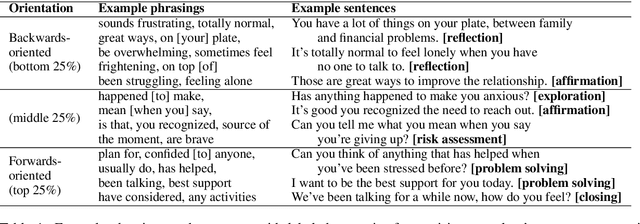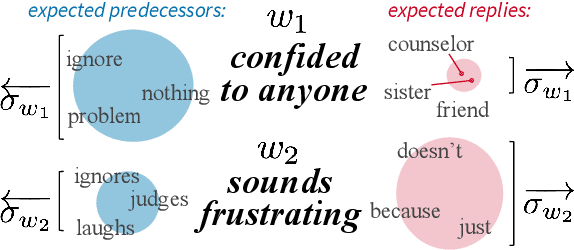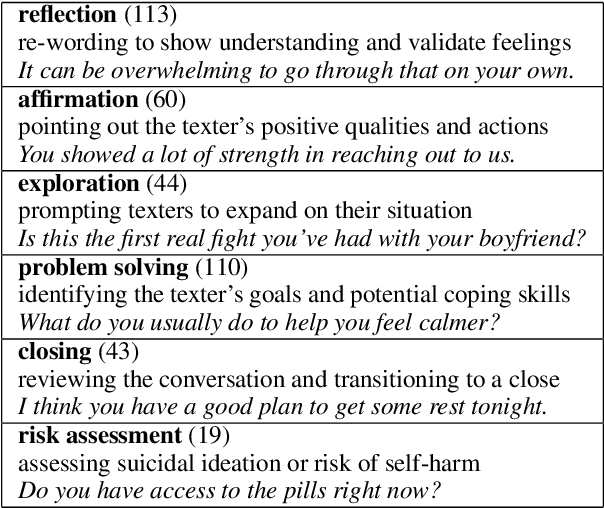Balancing Objectives in Counseling Conversations: Advancing Forwards or Looking Backwards
Paper and Code
May 08, 2020



Throughout a conversation, participants make choices that can orient the flow of the interaction. Such choices are particularly salient in the consequential domain of crisis counseling, where a difficulty for counselors is balancing between two key objectives: advancing the conversation towards a resolution, and empathetically addressing the crisis situation. In this work, we develop an unsupervised methodology to quantify how counselors manage this balance. Our main intuition is that if an utterance can only receive a narrow range of appropriate replies, then its likely aim is to advance the conversation forwards, towards a target within that range. Likewise, an utterance that can only appropriately follow a narrow range of possible utterances is likely aimed backwards at addressing a specific situation within that range. By applying this intuition, we can map each utterance to a continuous orientation axis that captures the degree to which it is intended to direct the flow of the conversation forwards or backwards. This unsupervised method allows us to characterize counselor behaviors in a large dataset of crisis counseling conversations, where we show that known counseling strategies intuitively align with this axis. We also illustrate how our measure can be indicative of a conversation's progress, as well as its effectiveness.
 Add to Chrome
Add to Chrome Add to Firefox
Add to Firefox Add to Edge
Add to Edge